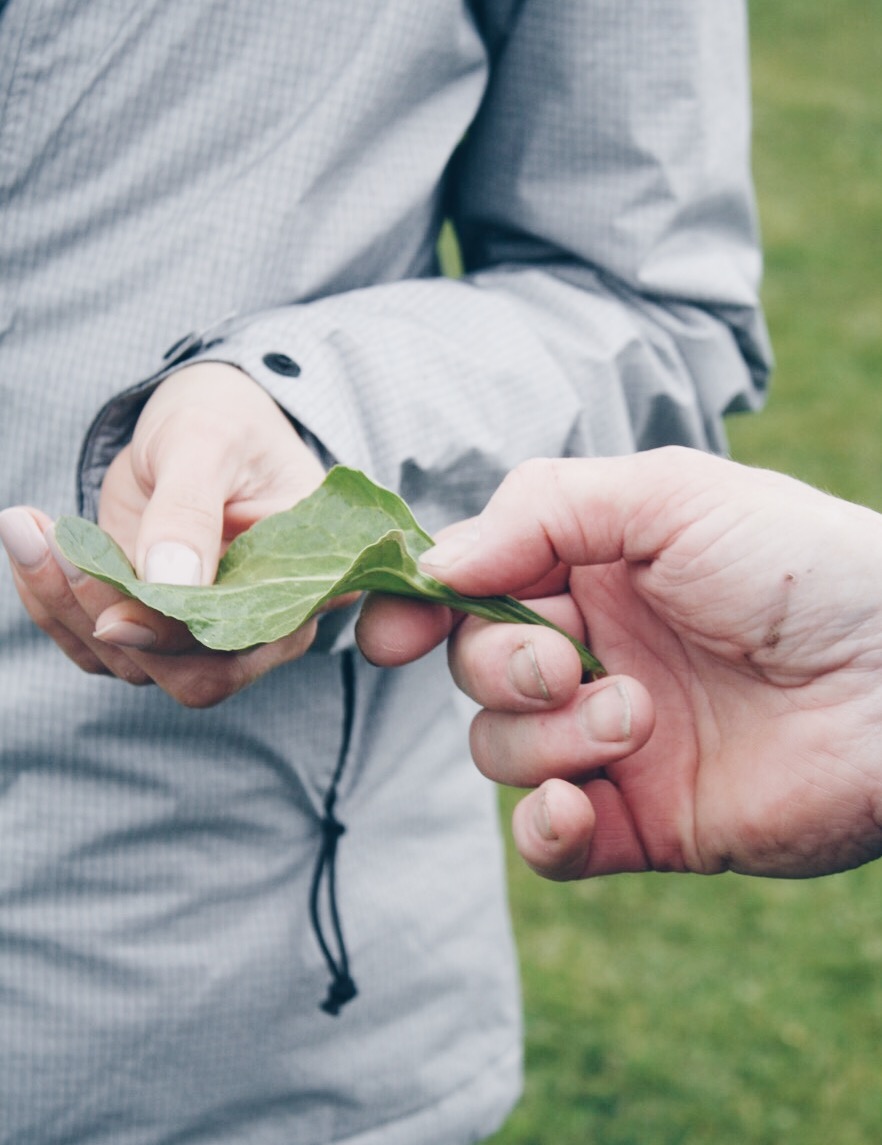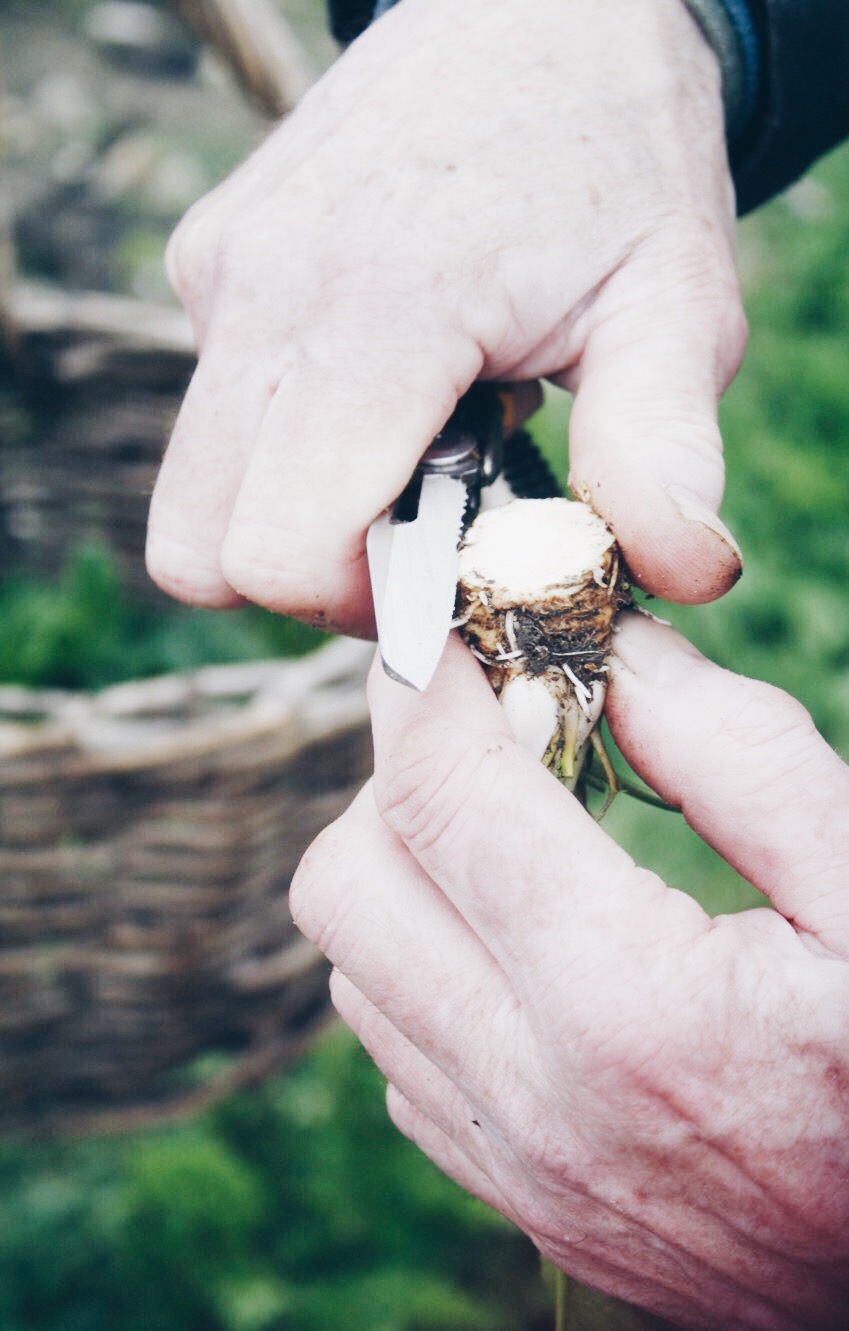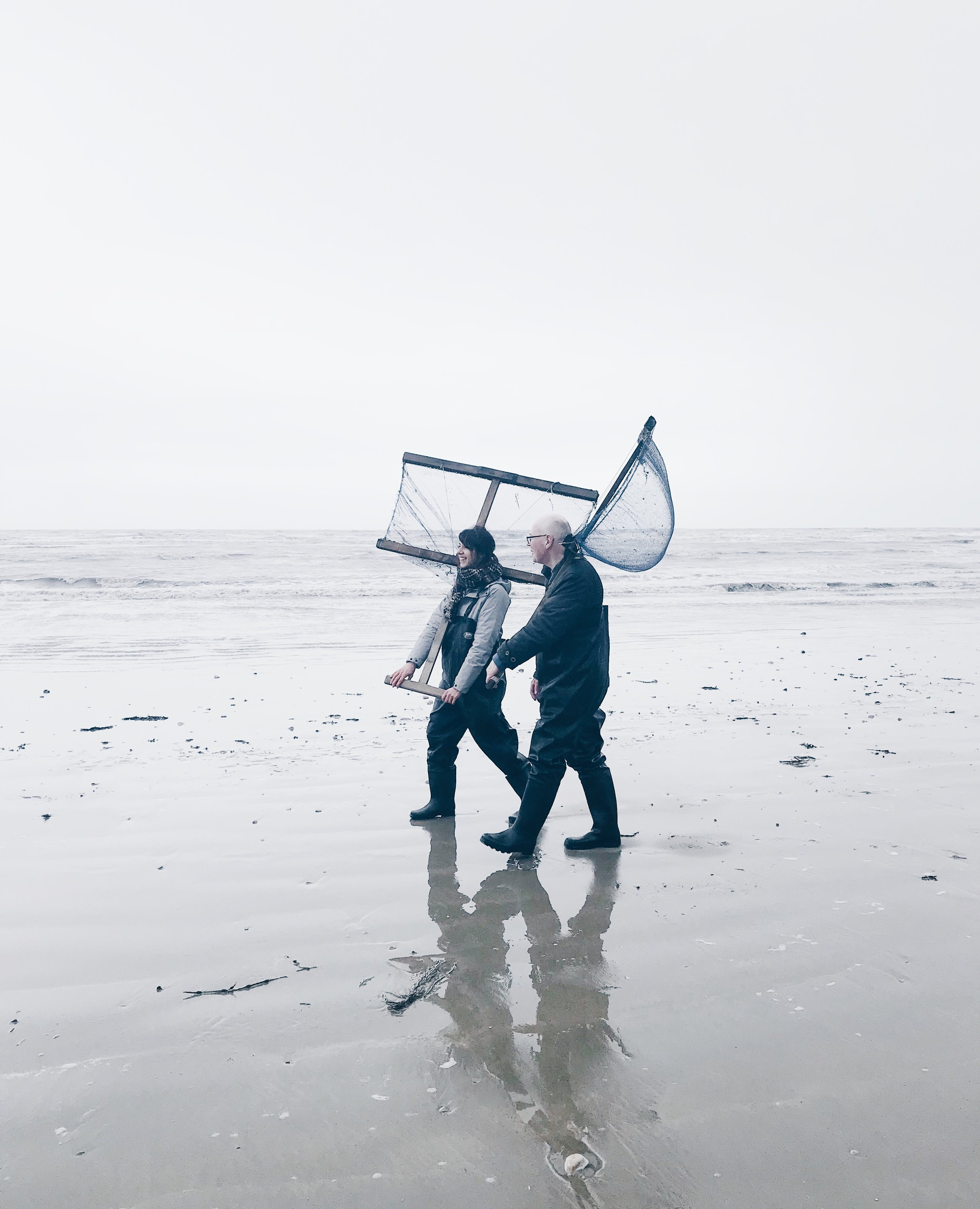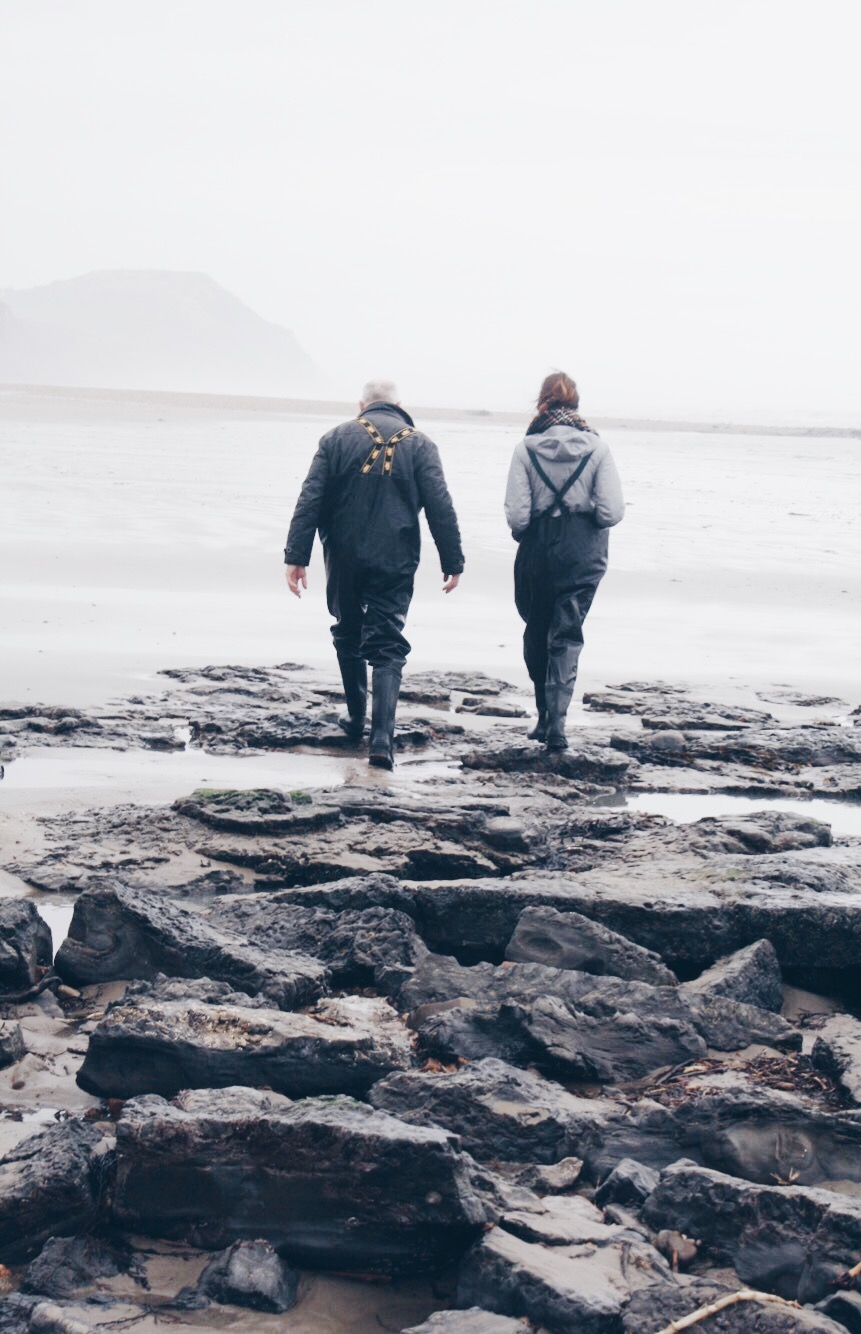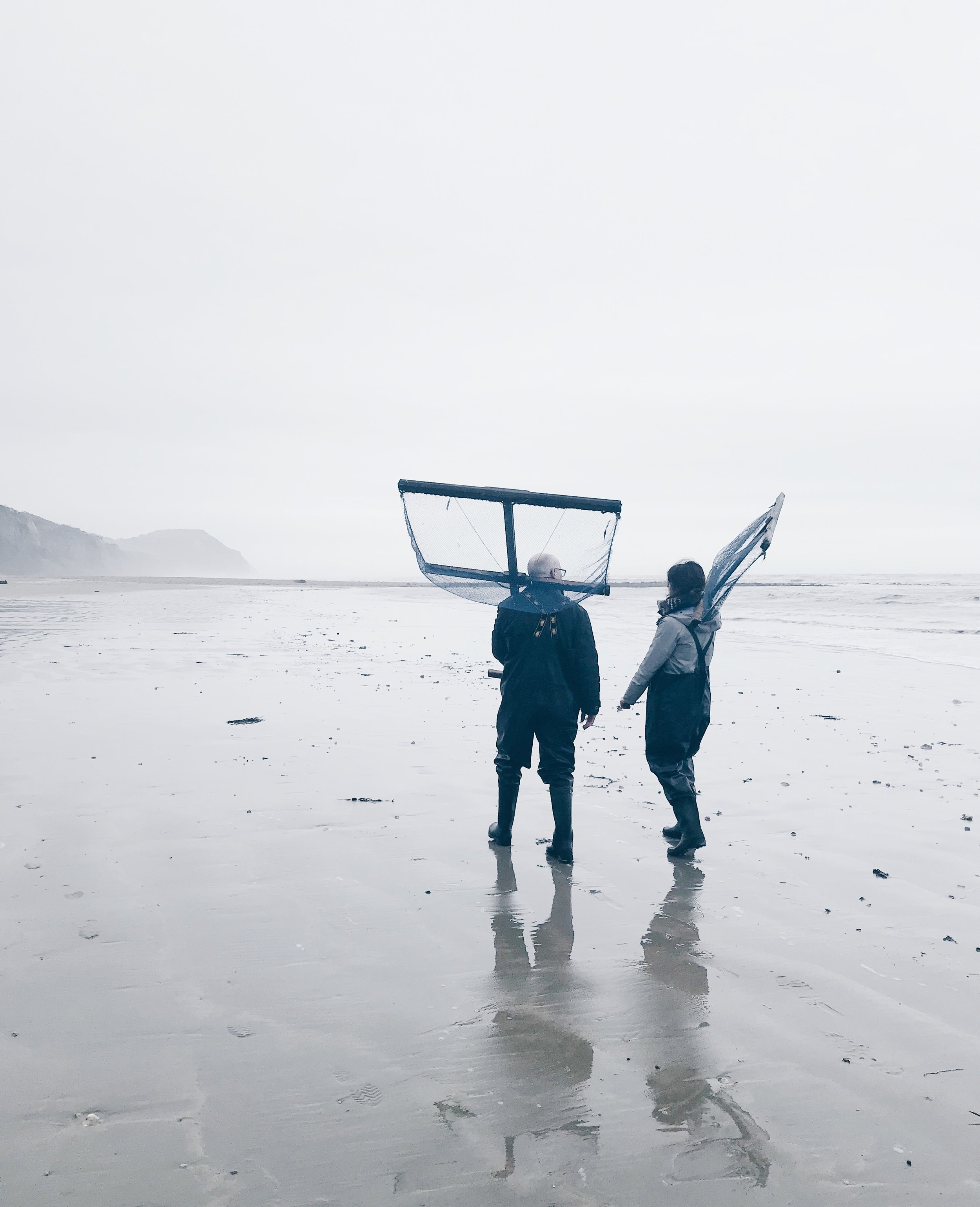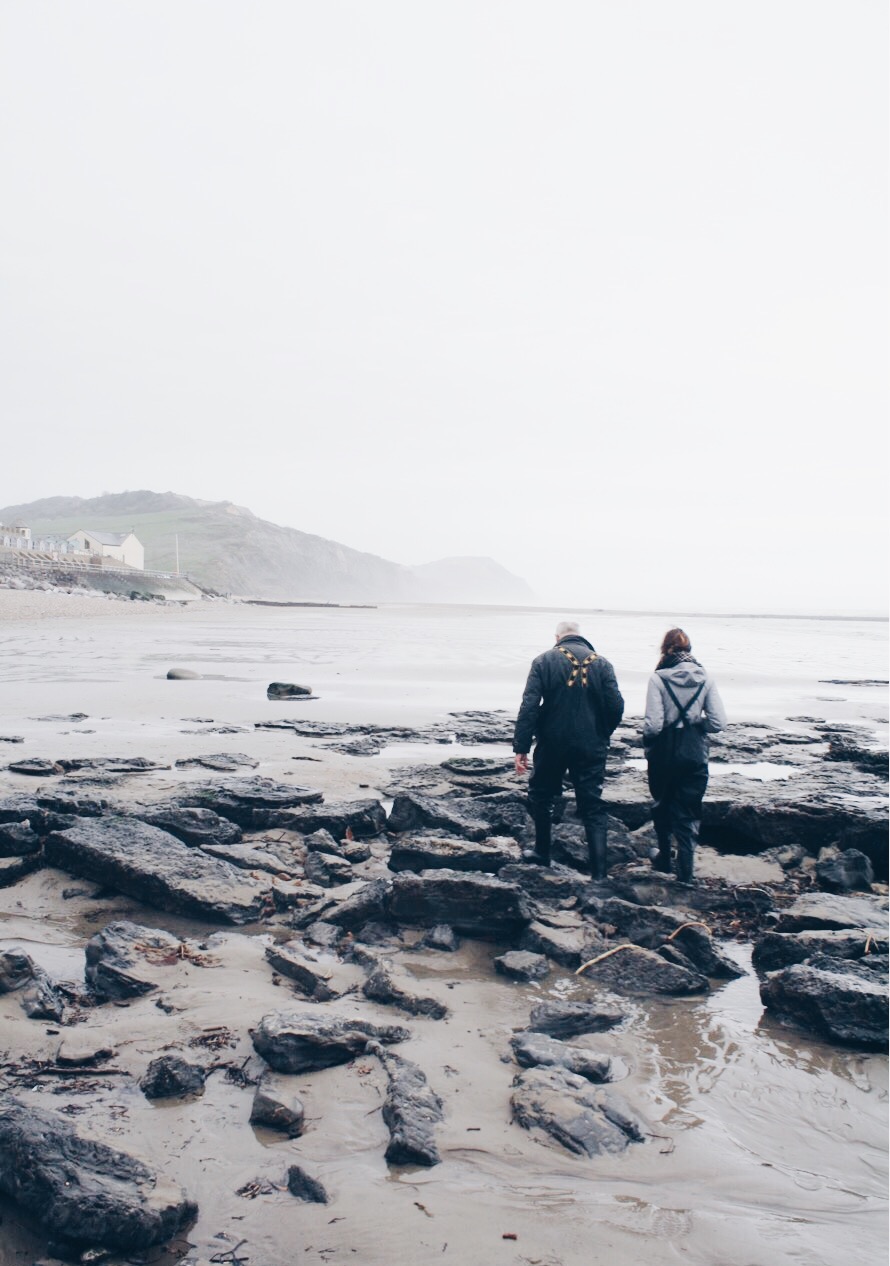A SEASIDE FORAY
The British seaside can be a wonderful source of free food if you know what you’re looking for
The seashore is where our ancient forebears found a ready meal, it is where we can most easily find food and it occurs in great quantities and variety. Known as the ultimate ‘edge habitat’, it is dynamic with constant change and opportunity for new plants and animals to gain a foothold.
We are natural foragers and it is within our instinct to hunt and gather.
Foraging the hedgerows and seashore for wild food is something that has always interested me, perhaps as I love the thought of sourcing, picking and cooking up ingredients that are completely natural, and creating a dish that not only tastes great, but is my own unique discovery; no element of food shopping, not even at the nicest delis in town, offer the same sense of satisfaction.
I met Author and Foraging Expert, John Wright, at Nancarrow Farm last year, where he was making rather lethal cocktails from foraged hedgerow ingredients. John has been interested in fungi since 1965, but never thought of eating any until fifteen years later when he moved to West Dorset, after which came the plants and then seaweeds and shellfish. His journey began blackberry picking and he cites this, along with cockle hunting, as being a real joy of childhood with his entire family setting off in his father’s 1928 Morris, known as ‘The Bus’ to make their smoke-clouded way over Portsdown Hill for the blackberries and to Langstone Harbour for cockles.
John is one of those few lucky people who managed to turn a hobby into a career and now spends his time foraging and encouraging others to forage through his writing, forays, talks and occasional TV and radio appearances.
When John invited me along to one of his coastal forays back in the spring, I was excited for the opportunity of what we would find.
John, author of the River Cottage Handbook ‘Edible Seashore’, has been running countryside and seashore forays at River Cottage for over ten years, guiding groups through the pleasures and perils of seaside harvesting, offering insight into the joys of what you can find on your everyday walks.
John’s coastal forays take place on the beautiful Devon Dorset coastline. Under his guidance there is opportunity to identify and gather your edible crop, from shellfish and crabs to seaweeds and a variety of seafood plants.
Back at River Cottage HQ you can study, cook and feast upon your finds; John, along with one of the resident chefs, will demonstrate how to cook up supreme dishes with the bounties of your seashore forage.
The coastal foray is designed to take you back to your roots, leaving you informed and inspired with your findings - get back-to-basics, engage your natural instincts and prepare to be hooked on foraging for your own suppers.
FORAGER’S NIP
I am met at the top of the hill at River Cottage HQ and transported to the barn by tractor and trailer, where myself and our group are welcomed by the friendly staff who pile us with plenty of tea, second breakfast and one of the famous ‘forager’s nips’, which turned out to be a cider brandy aperitif (sweet, fruity and strong). We meet John, who assures us with a twinkle in his eye that, 'The brew is designed to steady our nerve and foot.' John talks us through the format of the day before we head off in a small coach to the secret seaside location.
EXPLORERS ON THE UPPER BEACH
The secret location turns out to be the beautiful and unspoiled Charmouth Beach, on the Jurassic Coast, close to Lyme Regis. We spend the next hour exploring the upper beach, collecting anything wild that can be eaten. Under John’s guidance we find an abundance of wild plants including Sea Beet, Sea Radish, Burdock and Horse Radish. ‘It’s a revelation to find this in the wild.” He tells us. John pulls off entire leaves and with eyes watering, we taste the base of the stem to get the intense pepperiness. We also find Japanese Knotweed, an invasive species related to rhubarb (the stems being ideal for a vodka infusion or a puree) and Hops, the young tips of which are perfect for sautéing and made into an omelette.
John teaches us how to safely identify, pick and prepare our harvest as we discover the varying coastal plants and to demonstrate that not everything is good to eat, he shows us some impressive stands of Hemlock Water-dropwort. The leaves look like flat-leaved parsley but are deadly poisonous if eaten in quantity.
SHRIMPING
John invites us to don some waders, not my usual apparel though they were surprising comfortable and acted as a great windbreak! We embark on a search for brown shrimps. To catch them we push four-foot wide nets across the sand in two feet of water, the nets are incredibly heavy making it feel like hard work, though once I had found a few, it was difficult to stop. We ended up with a combined effort of about half a pint. It seemed laborious for very little, but great fun and far more rewarding than buying a packet of frozen prawns from a supermarket.
FORAGING FOR SEAWEEDS
We walk out on the rocks and around the shallows to forage for seaweed. John explains that there are several hundred species of seaweed around the British coast, none of them poisonous and about a dozen of them edible, the rest being too small, tough, slimy and tasteless to eat. We find six including Dulse, Carragheen and Laver, from which laverbread is made. The Laver has to be boiled for ten hours until it forms a sticky paste like a fishy Marmite. John tells us that it’s great with oatmeal and bacon for breakfast, a very Welsh dish.
We find Young Serrated Wrack, that we are told is perfect for making a hot pickle, Kelp, used like bay leaves, added to a stew or stock for its umami component and Pepper Dulse – inch-long, flattened Christmas trees. Eaten raw, John explains that they taste of cucumber, salt and fish.
BEACH PICNIC OF DREAMS
As the tide is still going out, and the crab pots that John put out the day before are still in deepish water, we take a break to enjoy a freshly prepared River Cottage picnic on the beach: fresh juices, bread, local cheese, amazing pork pie, cake and ale.
RETRIEVING THE CRAB POTS
We walk out carefully over the slippery seaweed covered rocks to find the crab pots – three small creels, sitting in three foot of water, visible only by the buoy attached. Three brave souls from our group venture out into the water to retrieve them. They contain what John describes as ‘not a bad catch’ - eight velvet-swimming crabs though four of the brown crabs are undersized and have to go back. John tells us that the best crabs are the Spider Crabs; they look like something from Alien, but the meat can be very tasty.
BACK AT BASE
We load the pots, buckets and nets into John’s truck and take the coach back to River Cottage HQ. Once back at base, we walk down the winding hillside, taking in the incredible views, with John upfront, on the lookout for anything edible. He shows us some plants from the fields and hedgerows. May blossom, Sorrel, Sweet Vernal Grass and some various fungi including St George’s mushrooms
COOKING DEMO
We are welcomed back at the barn with refreshing beverages, ready for the lowdown on the plants and creatures we have foraged. John talks us though simple ways of identifying plants, how to spot poisonous species, conservation issues and the laws of foraging. To wet our appetite before supper, one of the resident chefs demonstrates some dishes with typical seashore-foraged ingredients including Dulse soda bread, Seabeet, Dulse and smoked Pollack tart and deep-fried Dulse that tastes superb.
John shows us his specialty – seaweed pudding! This is much like a panna cotta thickened with carragheen. It’s a messy operation – the seaweed is boiled for half an hour then squeezed through muslin into hot, sweetened milk flavoured with Elderflower, then whisked with lots of cream added. The squeezed carragheen doesn’t look appetizing though it tastes pretty special.
Our collected crabs are also cooked and passed around and we enjoy tastings of everything from the day.
FORAGED SUPPER
We all sit down together to enjoy a feast, including our foraged harvest, along with local and seasonal fare, prepared by the River Cottage team. It was possibly one of the most delicious meals I have tasted; the textures and flavours of our foraged finds, unexpected and exciting and the best thing about it – we found and worked for the ingredients ourselves.
Going to the seaside is always a fun experience, but when you forage by the sea it adds purpose and a potential meal for the end of your day. Foraging brings with it a sense of discovery, never knowing what you may find.
Subscribe to my monthly newsletter 'Travel etc' for regular news and updates about my journeys in all things travel and lifestyle.
If you're interested in a future collaboration, creative content for your business or brand or a unique editorial feature, simply enter your details into the 'Contact Me' form.





